Sean Hannity and Liz Cheney Praise Ted Cruz' Deceptive Attack on Chuck HagelRead more here.

Matt Taibbi, Rolling Stone
Matt Taibbi writes: "More fun details about your new chief of the SEC. Do you feel safer? I know I do."few more things about Mary Jo White, the former prosecutor and corporate lawyer recently chosen by Barack Obama to head the SEC. Last week, I wrote about White's involvement in the notorious Gary Aguirre episode, wherein the former U.S. Attorney and then-partner at the hotshot white-shoe defense firm Debevoise and Plimpton helped squelch then-SEC investigator Aguirre's insider trading case against future Morgan Stanley CEO John Mack.
White, who was representing Morgan Stanley in this affair, went over Aguirre's head to talk directly to then-SEC enforcement chief Linda Thomsen about "reviewing" the case. After Aguirre was fired and the case against Mack went away, the official responsible for terminating the case, Aguirre's boss Paul Berger, was given a lucrative, multimillion-dollar job with Debevoise and Plimpton, closing the circle in what looks like a classic case of revolving-door corruption.
There are a few more troubling details about this incident that haven't been disclosed publicly yet. The first involve White's deposition about this case, which she gave in February 2007, as part of the SEC Inspector General's investigation. In this deposition, White is asked to recount the process by which Berger came to work at D&P. There are several striking exchanges, in which she gives highly revealing answers.
As usual Paul Krugman easily corrects the in-crowd/MSM white lies about Austerity Wins:
Looking for Mister Goodpain
By Paul Krugman
January 31, 2013
Three years ago, a terrible thing happened to economic policy, both here and in Europe. Although the worst of the financial crisis was over, economies on both sides of the Atlantic remained deeply depressed, with very high unemployment. Yet the Western world’s policy elite somehow decided en masse that unemployment was no longer a crucial concern, and that reducing budget deficits should be the overriding priority.
In recent columns, I’ve argued that worries about the deficit are, in fact, greatly exaggerated — and have documented the increasingly desperate efforts of the deficit scolds to keep fear alive. Today, however, I’d like to talk about a different but related kind of desperation: the frantic effort to find some example, somewhere, of austerity policies that succeeded. For the advocates of fiscal austerity — the austerians — made promises as well as threats: austerity, they claimed, would both avert crisis and lead to prosperity.
And let nobody accuse the austerians of lacking a sense of romance; in fact, they’ve spent years looking for Mr. Goodpain.
The search began with a passionate fling between the austerians and the Republic of Ireland, which turned to harsh spending cuts soon after its real estate bubble burst, and which for a while was held up as the ultimate exemplar of economic virtue. Ireland, said Jean-Claude Trichet of the European Central Bank, was the role model for all of Europe’s debtor nations. American conservatives went even further. For example, Alan Reynolds, a senior fellow at the Cato Institute, declared that Ireland’s policies showed the way forward for the United States, too.
Mr. Trichet’s encomium was delivered in March 2010; at the time Ireland’s unemployment rate was 13.3 percent. Since then, every uptick in the Irish economy has been hailed as proof that the nation is recovering — but as of last month the unemployment rate was 14.6 percent, only slightly down from the peak it reached early last year.
After Ireland came Britain, where the Tory-led government — to the sound of hosannas from many pundits — turned to austerity in mid-2010, influenced in part by its belief that Irish policies were a smashing success. Unlike Ireland, Britain had no particular need to adopt austerity: like every other advanced country that issues debt in its own currency, it was and still is able to borrow at historically low interest rates. Nonetheless, the government of Prime Minister David Cameron insisted both that a harsh fiscal squeeze was necessary to appease creditors and that it would actually boost the economy by inspiring confidence.
What actually happened was an economic stall. Before the turn to austerity, Britain was recovering more or less in tandem with the United States. Since then, the U.S. economy has continued to grow, although more slowly than we’d like — but Britain’s economy has been dead in the water.
At this point, you might have expected austerity advocates to consider the possibility that there was something wrong with their analysis and policy prescriptions. But no. They went looking for new heroes and found them in the small Baltic nations, Latvia in particular, a nation that looms amazingly large in the austerian imagination.
At one level this is kind of funny: austerity policies have been applied all across Europe, yet the best example of success the austerians can come up with is a nation with fewer inhabitants than, say, Brooklyn.
Still, the International Monetary Fund recently issued two new reports on the Latvian economy, and they really help put this story into perspective.
To be fair to the Latvians, they do have something to be proud of. After experiencing a Great-Depression-level slump, their economy has experienced two years of solid growth and falling unemployment.
Despite that growth, however, they have only regained part of the lost ground in terms of either output or employment — and the unemployment rate is still 14 percent. If this is the austerians’ idea of an economic miracle, they truly are the children of a lesser god.
Oh, and if we’re going to invoke the experience of small nations as evidence about what economic policies work, let’s not forget the true economic miracle that is Iceland — a nation that was at ground zero of the financial crisis, but which, thanks to its embrace of unorthodox policies, has almost fully recovered.
So what do we learn from the rather pathetic search for austerity success stories? We learn that the doctrine that has dominated elite economic discourse for the past three years is wrong on all fronts.
Not only have we been ruled by fear of nonexistent threats, we’ve been promised rewards that haven’t arrived and never will. It’s time to put the deficit obsession aside and get back to dealing with the real problem — namely, unacceptably high unemployment.
And, did anyone mention the words "conspiracy theory" yet? Because conspiracy theory is what I think of every time I listen to the MSM talking heads who tell us that just a little more Austerity and we'll all be rich again (not them, of course, they're already rich, thus why they can smile broadly with their big, white, well-cared-for teeth as they tell you to just pull in your belt another few notches - and brush your teeth harder).
The best ones, actually, are those labeled "only a conspiracy theory" by the well-meaning but largely ignorant "newscasters."
Two influential opponents of these legal changes were Tom Daschle, Senate Majority Leader, and Patrick Leahy, head of the Senate Judiciary Committee. Both received letters with spores of deadly anthrax. The source was never traced with certainty. After that Daschle and Leahy gave up their resistance against the new legislation and approved the Patriot Act.Wonder what will happen when the miracle of the internets informs the whole world about the true conspiracists? Here's a piece of nonfiction conspiracy that no one on the TV talks about at all (Seven Days in May time? No wonder they had to get rid of JFK.):
The Armageddon Plan
At this time the White House also developed a secret emergency plan, put in action however only at September 11th, 2001 for the first time. Initially it should guarantee that the government could continue its operations even after a Soviet nuclear strike. The plan was called COG (Continuity of Government) and called for a very special emergency measure: when disaster struck, three teams should be sent to different places in the country, replacing the government.
Each team would have an own “president” as well as other people standing in for the different departments and government agencies. If one team would be killed, the next one could be activated. So the planners hoped to keep control over the military and the most important parts of the administration, after an atomic bomb or another disaster had wiped out the government in Washington.
These worries about a possible “decapitation” of the national leadership were deemed very seriously because exactly this course of action was also part of the U.S. war strategy towards the Soviets.
The COG plan existed not only on paper. It was exercised in reality regularly in the 1980s. Once a year the teams, each consisting of a “president”, a “chief of staff” and about 50 staffers, were secretly flown from Washington to a closed military base or a bunker somewhere in the United States. There they played the emergency scenario for several days. Not even their closest relatives knew about the location or purpose of the exercise.
Richard Clarke, later anti-terror coordinator under the presidents Clinton and Bush junior, recalls one of the maneuvers at that time:
”I remember one occasion where we got the call. We had to go to Andrews Air Force Base and get on a plane and fly across the country. And then get off and run into a smaller plane. And that plane flew off into a desert location. And when the doors opened on the smaller plane, we were in the middle of a desert. Trucks eventually came and found us and drove us to a tent city. You know, this was in the early days of the program. A tent city in the middle of the desert — I had no idea where we were. I didn’t know what state we were in. We spent a week there in tents, pretending that the United States government had been blown up. And we were it. It’s as though you were living in a play. You play-act. Everyone there play-acts that it’s really happened. You can’t go outside because of the radioactivity. You can’t use the phones because they’re not connected to anything.”Part of every team was one authentic secretary, leading a government department also in real life. He had to play the president. Yet his real life portfolio didn´t matter – at one point even the secretary of agriculture played the president. In the end the secretary taking part in the exercise was usually just the one being dispensable. Apparently more important was the role of the chief of staff. This part was routinely played only by a person who had been White House chief of staff also in real life.
Therefore Rumsfeld and Cheney were regular participants of the secret annual COG exercises. Other attendants described them as being involved in shaping the program.
So at a time when the two men had no position whatsoever in government (Rumsfeld, as mentioned, was boss of a pharma company, Cheney was congressman), both of them disapeared every year for a few days to practice the take-over of the government after a disaster.
Above the law
The plan was secret also because it bypassed the constitution. Since the presidential succession was already explicitly fixed by law: if the president died, the vice president took over, then followed by the speaker of the house, after him the longest serving senator, then the secretaries of state, treasury, defense and so forth. However the COG plan simply ignored this well balanced constitutional arrangement. In an emergency it called instead for a president who was not democratically legitimized at all.
The plan was authorized with a secret directive by president Reagan. According to his security adviser Robert McFarlane Reagan personally decided who would lead the individual teams. The COG liaison officer in charge inside the National Security Council was Oliver North, who later became known as the key person in the center of the Iran-Contra scandal.
Only incidentally, in connection with that scandal, the first details of the secret plan came to light in 1987. Under president Reagan, Lieutenant Colonel Oliver North had coordinated a series of steps building in effect a shadow government, Congress didn´t know about, let alone having approved it.
The Miami Herald wrote about this in 1987: “Oliver North helped draw up a controversial plan to suspend the Constitution in the event of a national crisis, such as nuclear war, violent and widespread internal dissent or national opposition to a U.S. military invasion abroad. (…) From 1982 to 1984, North assisted FEMA, the U.S. government’s chief national crisis-management unit, in revising contingency plans for dealing with nuclear war, insurrection or massive military mobilization.”
That the COG plan, suspending the constitution, could indeed not only be activated in case of a nuclear war, was laid out in a further directive authorized by Reagan in the last days of his presidency in November 1988. According to this directive the plan should be executed in a “national security emergency”, defined rather vague as a “natural disaster, military attack, technological emergency, or other emergency, that seriously degrades or seriously threatens the national security of the United States”.
In effect this meant a massive undermining of democratic principles. The COG plan, executed unter the circumstances mentioned, could also be used as cover for a coup d’état.
Meanwhile Cheney and Rumsfeld went on secretly exercising the take-over of the government during their annually running maneuvers. Belonging to this inner circle of potential state leaders had to be an uplifting feeling for both men. In case of a huge disaster the fate of the nation would lie in their hands.
Reach for the presidency
At the end of the 1980s Cheney moreover had climbed to the board of the Council on Foreign Relations, the elite network connecting business leaders and politicians, well known for its huge influence on American foreign policy. In the meantime Rumsfeld had become a multimillionaire through the sale of the pharma company he had led. He planned running for the presidency in 1988. But his campaign didn´t succeed. From the outset Reagan´s vice president Bush senior had been the republican frontrunner – and finally also won the election.
But now Cheney got his chance. He became secretary of defense in the new administration, the same position Rumsfeld had already held 12 years before. Cheney successfully managed the first Iraq war in 1991, which led – parallel to the decline of the Soviet Union – to a permanent deployment of U.S. troops in the oil-rich Saudi Arabia. The control over Iraq was now in reach.
After the defeat of the Republicans in 1992 Cheney also considered (his) own presidential campaign. Yet soon he had to realize that he lacked support. Instead he moved to the private sector, becoming CEO of Halliburton, one of the world´s biggest oil supply companies. As secretary of defense he already had build connections to the firm, leading later to multi-billion-dollar contracts with the Pentagon. The new job now also filled Cheney´s pockets, making him a multimillionaire as well.
Meanwhile Rumsfeld had established himself as a highly effective and ambitious business executive. In the 1990s he first led a telecommunications company, then a pharma corporation.
The COG plan still existed, however with other presumptions. After the fall of the Soviet Union it no longer focused on the Russian nuclear threat, but on terrorism. Though it was reported in the mid 1990s that president Clinton wanted the program to phase out, it later became clear that this announcement only applied to the portion of the plan relating to a nuclear attack. Then anti-terror coordinator Richard Clarke later disclosed that he had updated the COG plan in 1998. The corresponding presidential directive (PDD-67) was secret. Its precise content was never made public.
Cold War reloaded
At the same time a circle of neoconservatives around Rumsfeld and Cheney prepared for return to power. At the end of the 1990s they founded an organisation called “Project for the New American Century” (PNAC). Their self declared desire: “increase defense spending significantly” and “challenge regimes hostile to our interests”.
In parallel Rumsfeld headed a congressional commission assessing the threat of foreign long range missiles. Already in the 1980s Ronald Reagan had started plans for a national missile defense, which burdened the national budget over the years with about 50 billion dollars. Yet in the 1990s even the own intelligence agencies saw no longer a real threat. Because who should fire missiles on Washington in the near future?
Yeltsin´s Russia? Or China, that became economically more and more interdependent with the United States? However the so-called “Rumsfeld Commission” revised the assessment of the intelligence agencies. In its 1998 published report new possible aggressors were named: North Korea, Iran and Iraq.
The same year Rumsfeld and his PNAC associates had already written an open letter to president Clinton, urging him to be tougher on Iraq. Saddam Hussein´s regime should be “removed”, the letter demanded.
Finally, in September 2000, two month before the presidential election, PNAC published a lengthy strategy paper, giving policy guidance to the next administration. “Rebuilding America´s Defenses” was its programmatic title and it analysed principles and objections of a new defense policy.
Basically the paper called for a massive increase in defense spending and a transformation of the armed forces into a dominant but mobile, rapidly deployable power factor. The aim was enduring military supremacy, which according to PNAC would urgently require new weapons systems like the missile defense. Yet the paper made also clear that the process of implementing these demands would be a long one and provoke resistance, “absent” – quote – “some catastrophic and catalyzing event – like a new Pearl Harbor.”
A question of energy
After George W. Bush´s inauguration in January 2001 the members of this circle secured important posts in the new administration. Cheney turned into the leading figure. This had become apparent well before the election. As early as April 2000 Bush had asked him to handle the selection of his vice presidential running mate. In the end Cheney had all but proposed himself for the job. Meanwhile the workaholic had survived three heart attacks.
One of his first recommendations to Bush was the appointment of Rumsfeld, almost 70, as secretary of defense. Deputy of his old associate became Paul Wolfowitz, a hardliner who had already worked for Cheney as chief strategist in the Pentagon at the beginning of the 1990s.
Compared to these men president Bush himself was a newcomer in Washington. Though he was blessed with political instinct and a very practical intuition, he could hardly hold a candle to these old hands intellectually.
One of the first steps of the new administration was the creation of a “National Energy Policy Development Group”. It was headed directly by Cheney. Its final report, issued in May 2001, described the situation quite openly:
“America in the year 2001 faces the most serious energy shortage since the oil embargoes of the 1970s. (…) A fundamental imbalance between supply and demand defines our nation´s energy crisis. (…) This imbalance, if allowed to continue, will inevitably undermine our economy, our standard of living, and our national security. (…) Estimates indicate that over the next 20 years, U.S. oil consumption will increase by 33 percent, natural gas consumption by well over 50 percent, and demand for electricity will rise by 45 percent. If America´s energy production grows at the same rate as it did in the 1990s we will face an ever-increasing gap. (…) By 2020, Gulf oil producers are projected to supply between 54 and 67 percent of the world´s oil. Thus, the global economy will almost certainly continue to depend on the supply of oil from Organization of Petroleum Exporting Countries (OPEC) members, particularly in the Gulf. This region will remain vital to U.S. interests.”Later it was disclosed that Cheney´s energy task force had also secretly examined a map of the Iraqi oil fields, pipelines and refineries along with charts detailing foreign suitors for il-field contracts there. Again, the date was March 2001.
Anticipating the unthinkable

Concurrently to its effort in energy policy the new administration created an “Office of National Preparedness”. It was tasked with the development of plans responding to a possible terror attack and became assigned to the “Federal Emergency Management Agency” (FEMA). FEMA was already responsible for the COG plan since the 1980s. To call it back to mind: “From 1982 to 1984, Oliver North assisted FEMA in revising contingency plans for dealing with nuclear war, insurrection or massive military mobilization.”
Back then Cheney had played a role in shaping these plans. Now he could continue the work – because Bush appointed him to head the new program. Director of FEMA on the other hand became Joe Allbaugh, who had little professional expertise, but could offer other qualities. Allbaugh was Bush´s campaign manager, a man for tough and rather rude matters and also one of the president´s closest confidants. Back in 1994 he had managed Bush´s campaign to become governor of Texas and at the end of 2000 he had helped stopping the recount of votes in Florida.
That an expert for political tricks was appointed to head FEMA indicates that the administration had political plans with the emergency management agency from the outset.
Till today it´s undisclosed how the COG plan was refined in detail under Cheney´s direction in 2001. However the following is apparent: in the months leading to 9/11 Cheney linked anti-terror and emergency management measures with national energy policy.
Commissions working on both issues were handled by him simultaneously. This connection anticipated the policy after 9/11, which could be summarized as using a terror attack as rationale for extending the power of the executive and waging war to seize control of world regions important for energy supply.
The emergency plans Rumsfeld and Cheney were involved with since the 1980s culminated in autumn 2001. On the morning of September 11th, the secret COG program was implemented for the first time. Shortly before 10:00 a.m., after the impact of the third plane into the Pentagon, Cheney gave the order to execute it.
The shadow government
Almost nothing is known about the content of the plan and the specific effects of its activation. The secrecy in this respect appears grotesque. Even the simple fact of the plan´s implementation on 9/11 was concealed for months. After sporadic hints in the press the Washington Post finally disclosed some details in March 2002.
In an article titled “Shadow Government Is At Work In Secret,” it reported that about 100 high-ranking officials of different departments were working outside Washington as part of the emergency plan since 9/11:
“Officials who are activated for what some of them call ‘bunker duty’ live and work underground 24 hours a day, away from their families. As it settles in for the long haul, the shadow government has sent home most of the first wave of deployed personnel, replacing them most commonly at 90-day intervals. (…) Known internally as the COG, for ‘continuity of government’, the administration-in-waiting is an unannounced complement to the acknowledged absence of Vice President Cheney from Washington for much of the past five months. Cheney’s survival ensures constitutional succession, one official said, but ‘he can´t run the country by himself.’ With a core group of federal managers alongside him, Cheney – or President Bush, if available – has the means to give effect to his orders.”But what orders gave Cheney to his strange “shadow government” while his stays at the bunker? And what justified extending this emergency measure for seemingly infinite time? For the White House clearly hadn´t been wiped out by bombs. The president lived and his administration was able to act. Who needed a permanent second secret government?
After the first disclosure of these facts in spring 2002 leading politicians of the legislative immediately started expressing their astonishment. Soon it became clear that neither Senate nor House of Representatives knew anything about the activation of COG and the work of the “shadow government” in secret. The parliament had simply been ignored. Later the 9/11 Commission experienced similar executive secrecy. Though it mentioned in its final report the implementation of the plan on 9/11, it also admitted not having investigated the issue in depth. Instead the Commission had only been briefed “on the general nature” of the plan.
Patriots under pressure
An immediate response to 9/11 was the Patriot Act, passed only one month later, and allowing a broad range of highly controversial measures, from domestic wiretapping to warrantless detention of foreign terror suspects. The latter legalized the forthcoming procedures at Guantánamo, leading to secret U.S. prisons all over the world.
Two influential opponents of these legal changes were Tom Daschle, Senate Majority Leader, and Patrick Leahy, head of the Senate Judiciary Committee. Both received letters with spores of deadly anthrax. The source was never traced with certainty. After that Daschle and Leahy gave up their resistance against the new legislation and approved the Patriot Act.
In their radical nature the hastily passed changes bore resemblance to decrees while a state of emergency. And indeed were they similarly already part of the COG plan in the 1980s.
Government officials familiar with COG indicated after 9/11 that the plan could really have resulted in martial law – if additionally to the attacks on the World Trade Center and the Pentagon also large numbers of congressmen and executive branch leaders had been killed on that day.
Is it in this context a coincidence only that the fourth hijacked plane on 9/11 was heading towards Washington to hit the Capitol or the White House?
Killers from Sudan?
There is also circumstantial evidence for an assassination attempt on president Bush in Florida that morning. The Secret Service had received a related warning the night before at 4:08 a.m., according to a TV report by a local ABC affiliate. A few hours later Secret Service agents searched an apartment in Sarasota and arrested four men from Sudan, apparently belonging to the South Sudanese Liberation Army SPLA, a paramilitary force secretly supported by the United States. Also AP reported these arrests mentioning that the suspects had been released soon again because they had “no connection” to 9/11. The whole issue just would have been a “coincidence”.
President Bush spent the night before 9/11 at a resort on Longboat Key, an island right next to Sarasota where he planned to visit an elementary school on the next morning. Longboat Key Fire Marshall Carroll Mooneyhan was a further witness of the possible assassination attempt. He said that at about 6 a.m. on September 11th a van with self-proclaimed reporters of middle eastern descent had pulled up at Bush´s resort, stating they had a “poolside” interview with the president. The men asked for a special Secret Service agent by name but where turned away by the guards.
Were these “reporters” identical with the Sudanese temporarily arrested by the Secret Service later that morning in Sarasota? The incident resembled at least the successful assassination of Taliban foe Ahmed Shah Massoud two days before on September 9th in Afghanistan. The suicide attackers there were also a fake TV team using a bomb hidden in a camera, as the New York Times reported on September 10th.
Additionally three witnesses remembered seeing Mohammed Atta and a companion at Longboat Key´s Holiday Inn on September 7th, three days before Bush would spend the night on that same small island. September 7th was also the day the White House first publicly announced Bush´s schedule to travel to Sarasota. In this context it is surely worth to consider if Atta scouted out the place for an assassination plot.
Completing the plot
The question arises: Did a circle around Cheney, Rumsfeld and some associates use 9/11 for a disguised coup d’état, partly failed in its execution?
Regardless of the answer to that question – 9/11 in fact allowed the implementation of emergency measures, the weakening of the legislative, the start of several wars and a massive increase in defense spending. The amounts in question easily exceed the imagination of observers.
While in the second half of the 1990s the average national defense budget totaled about 270 billion dollars a year, that number nearly doubled in the decade after 9/11, when the average annual budget went up to over 500 billion. For the Pentagon´s private contractors that meant a sales increase of inconceivable 2.300 billion dollars between 2001 and 2010.
A National Economy Under Arms
If one looks at the development of defense spending in the United States since 1940, some far-reaching conclusions arise. It seems as if the attack on Pearl Harbor and the following involvement in World War II led to a structural change of the American economy. The budgetary value of the military was never reduced to a “normal” level after that. On the contrary it increased decade by decade. Thus the whole economy got into a fatal dependency on the defense business.
This ongoing development came to a halt only with the fall of the Soviet Union. Ten years later then 9/11 became the catalyzing event to kick-start the military buildup again – with all its broad economic effects on the country.
Cheney and Rumsfeld don´t seem to be driving forces in this “game”, but merely two talented managers, risen to the top in the stream of events. Author James Mann, who had disclosed their involvement in the COG plan first in 2004, described their political role this way:
“Their participation in the extra-constitutional continuity-of-government exercises, remarkable in its own right, also demonstrates a broad, underlying truth about these two men. For three decades, from the Ford Administration onward, even when they were out of the executive branch of government, they were never far away. They stayed in touch with defense, military, and intelligence officials, who regularly called upon them. They were, in a sense, a part of the permanent hidden national-security apparatus of the United States, inhabitants of a world in which Presidents come and go, but America keeps on fighting.”
Oh yeah. It was all just a coincidence. Now there's a conspiracy theory.

























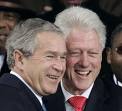
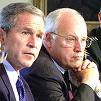
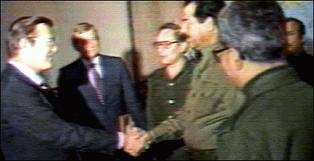
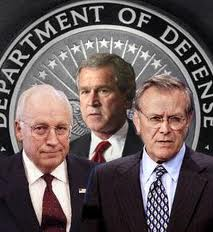
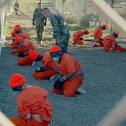
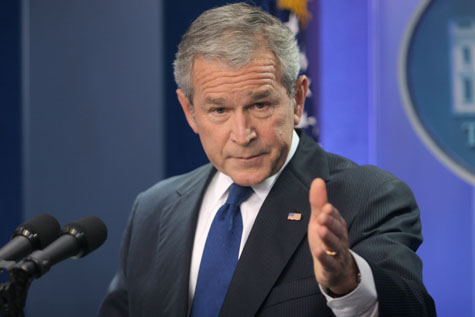






No comments:
Post a Comment